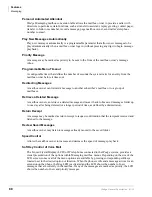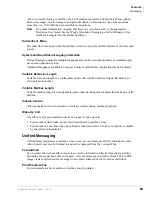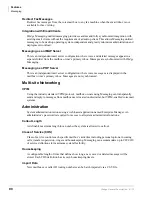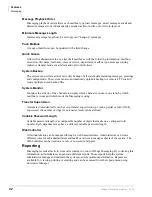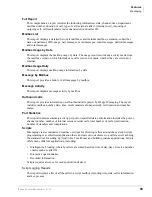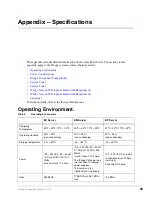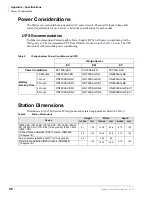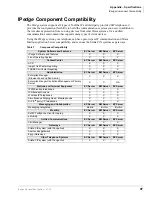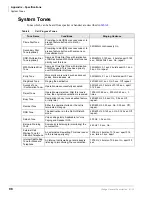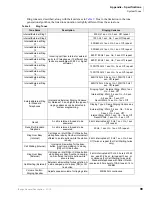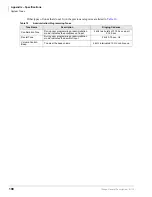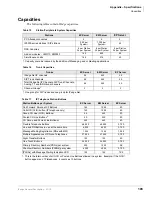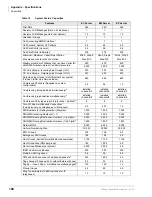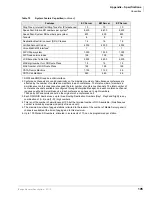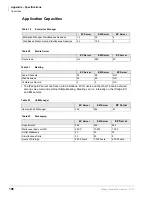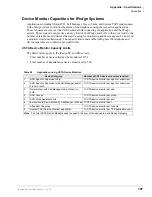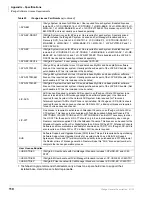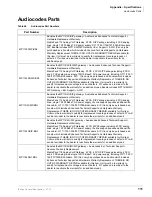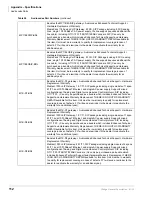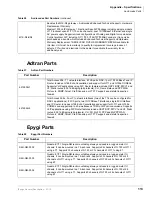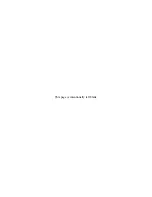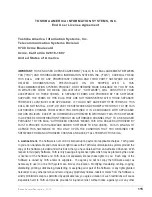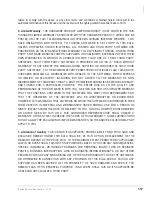
Appendix – Specifications
IPedge Net and IP Telephone Bandwidth Requirements
102
IPedge General Description 01/12
When sharing voice and data on the same network segment, the data will cause some jitter in voice
communications, especially on slower segments.
shows calculations of the amount of
jitter assuming a worst case data packet size of 1500 bytes (Maximum Transmission Unit (MTU) =
1500) based on a segment’s bandwidth. This also requires that the routers connecting the segment
through the WAN support Diffserv.
Note
A router that doesn’t support Diffserv may stack multiple data packets together increasing
the jitter perhaps indefinitely. And the voice quality will be indeterminate.
Class definition categories are shown in
.
shows the amount of bandwidth required for setting up and tearing down calls
independent of the amount of voice traffic.
So the amount of bandwidth that is required on a segment to support a specific number of calls is
the sum of the number of channels multiplied by the bandwidth for the selected CODEC and
interval, plus the bandwidth required for the selected number of busy hour call attempts. And the
jitter is determined by the bandwidth of the WAN segment.
Example: If you want to support 4 calls using the G.711 CODEC with a 20 msec. interval, this
requires 4 x 88 kbps = 352 kbps of bandwidth. In addition, to support 1000 busy hour call
attempts, 6 kbps must be added for a total of 358 kbps. If only voice is going to be carried on the
segment, then a 384 kbps segment (6 B-channels) is sufficient.
If voice and data are going to be mixed on the segment, then at least 25% (89.5 kbps) should be
added, or more, based on the amount of data traffic desired. In this case, a total of 447 kbps will be
required which would best be supported by a 512 kbps segment (8 B-channels). This would result
in an expected jitter of 20 ms in the voice traffic.
When using the protocol with IP telephones, keep alive packets are exchanged
between the IPU and the phones. This traffic amounts to 3 kbps per phone.
Table 12
IP
edge
Net IP Jitter on Mixed Voice and Data WAN
No. of
B-Channels
of WAN
Bandwidth
(kbps)
Time to
transmit max.
MTU (ms)
Expected
Jitter (ms)
Class
2
128
93.75
100
Poor
4
256
46.88
50
Fair
6
384
23.44
30
Fair
8
512
15.63
20
Good
24
1536
1.00
1
Excellent
Table 13
IP
edge
Net IP Class Definitions
Class
Delay (ms)
Jitter (ms)
Excellent
< 20
< 10
Good
< 50
< 20
Fair
< 100
< 50
Poor
< 200
< 100
Table 14
IP
edge
Net IP Bandwidth Required for Call Setup
Traffic Rate
(BHCA
1
)
1. BHC = Busy Hour Call Attempts
Required
Bandwidth
1000
6
2000
12
4000
23
6000
36
Содержание ID EDGE
Страница 1: ...TOSHIBA Telecommunication Systems Division January 2012 General Description Title Page ...
Страница 6: ...This page is intentionally left blank ...
Страница 12: ...This page is intentionally left blank ...
Страница 24: ...This page is intentionally left blank ...
Страница 128: ...This page is intentionally left blank ...
Страница 134: ...This page is intentionally left blank ...
Страница 142: ...This is the last page of the document ...

